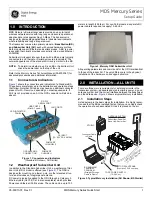
Connecting your equipment
2
2
15
Connecting your component with no HDMI
terminal
This diagram shows connections of a TV and DVD player (or
other playback component) with no HDMI terminal to the
receiver.
Important
•
When the receiver and TV are connected by composite
cable, the OSD function allowing display of the receiver’s
settings, operations, etc., on the TV’s screen cannot be
used. In this case, watch the receiver’s front panel display
while performing the various operations and making
settings.
Note
•
In order to listen to the audio from the TV that is connected
to this receiver using a analog audio cables, set-up for
analog audio input is required (see
•
You can only connect one component to the optical input
terminal. If connecting other devices, please use a different
method to connect the audio.
In order to listen to the audio from the source component
that is connected to this receiver using an optical cable,
first, switch to the
DVD
(DVD player) or
SAT/CBL
(set-top
box), then press
SIGNAL SEL
to choose the audio signal
O1
(OPTICAL1) (see
Selecting the audio input signal
.
•
You can only connect one component to the coaxial input
terminal. If connecting other devices, please use a different
method to connect the audio.
In order to listen to the audio from the source component
that is connected to this receiver using a coaxial cable, first,
switch to the
DVD
(DVD player) or
SAT/CBL
(set-top box),
then press
SIGNAL SEL
to choose the audio signal
C1
(COAXIAL1) (see
Selecting the audio input signal
.
VIDEO OUT
DIGITAL AUDIO OUT
OPTICAL
COAXIAL
R
L
ANALOG AUDIO OUT
DIGITAL AUDIO OUT
OPTICAL
COAXIAL
R
L
ANALOG AUDIO OUT
VIDEO OUT
VIDEO IN
DIGITAL AUDIO OUT
OPTICAL
R
L
ANALOG AUDIO OUT
Select one
TV
DVD player
Select one
This connection is
required in order
to listen to the
sound of the TV
over the receiver.
Select one
Set-top box
OSD cannot be output.
















































